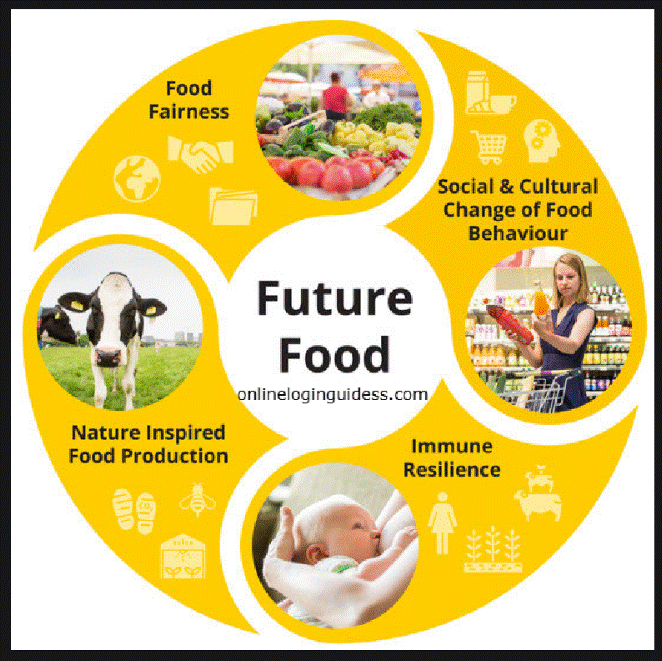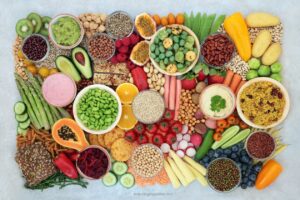Food Innovation: Transforming the Future of Nutrition, Sustainability, and Global Well-being
Introduction Food is a fundamental human necessity, but in the 21st century, it has evolved far beyond sustenance. Today,

Introduction
Food is a fundamental human necessity, but in the 21st century, it has evolved far beyond sustenance. Today, food innovation is at the heart of global conversations on health, environment, technology, and culture. With growing concerns about climate change, food insecurity, malnutrition, and population growth, the need to innovate in the way we produce, distribute, and consume food has never been more urgent.
Food innovation refers to the development and application of new ideas, technologies, products, and systems in the food industry. It spans a wide spectrum, including agricultural advancements, alternative proteins, smart packaging, sustainable practices, food tech, and personalized nutrition. This article explores the evolution, drivers, challenges, and promising future of food innovation — offering a complete picture of how it is revolutionizing our global food systems.

Historical Perspective: From Preservation to Precision
Innovation in food is not a modern concept. Early civilizations introduced fermentation, salting, smoking, and drying to preserve food. The invention of canning in the 19th century, followed by refrigeration, pasteurization, and freeze-drying, revolutionized food storage and distribution.
In the 20th century, mass production and industrial agriculture helped meet growing demands. However, this came at the cost of nutrition quality, biodiversity, and environmental sustainability. The 21st century brought a new wave of innovation — one that seeks to balance technology with sustainability, ethics, and health.
The Drivers Behind Modern Food Innovation
a. Population Growth and Urbanization
By 2050, the global population is expected to surpass 9.7 billion. Feeding this population with current agricultural methods would require 70% more food, according to the UN. Urbanization further strains supply chains, increasing the need for urban agriculture, vertical farms, and shorter supply networks.
b. Environmental Pressures
The food industry is responsible for over 30% of global greenhouse gas emissions. Deforestation, soil degradation, water scarcity, and overfishing are pressing concerns. Innovations such as plant-based proteins, regenerative agriculture, and zero-waste food processing aim to minimize environmental footprints.
c. Health and Lifestyle Changes
Modern consumers demand functional, nutritious, and safe food. Rising cases of obesity, diabetes, and heart disease have shifted attention toward low-sugar, high-protein, organic, and allergen-free products. Innovation now targets personalized diets, microbiome-friendly foods, and nutrient-dense snacks.
d. Technological Advancements
Artificial Intelligence, Internet of Things (IoT), robotics, and biotechnology have enabled precision agriculture, lab-grown meat, AI-powered meal planning, and real-time supply chain tracking. Technology is a central enabler of food innovation.
Major Innovations Reshaping the Food Industry
a. Plant-Based and Cultivated Proteins
The global market for plant-based meat is booming, led by companies like Beyond Meat and Impossible Foods. These products are made using peas, soy, or wheat proteins, and mimic the texture and flavor of real meat with fewer environmental and ethical concerns.
Lab-grown (cultivated) meat, developed from animal cells without raising or slaughtering animals, is also gaining traction. Although expensive now, costs are decreasing. Countries like Singapore and the U.S. have already begun regulatory approval processes.
b. Vertical and Urban Farming
Vertical farming involves growing crops in stacked layers using hydroponics or aeroponics, often inside climate-controlled buildings. This technique conserves land, reduces water usage by 90%, and allows for year-round production near urban centers.
Cities like Dubai, Singapore, and Tokyo are investing in vertical farms to boost food security and reduce import dependence.
c. Food Waste Reduction Technologies
Approximately 30% of global food is wasted. Innovations such as edible coatings, smart packaging that changes color with spoilage, and AI for inventory prediction help extend shelf life and reduce waste.
Startups like Apeel Sciences and Too Good To Go are using tech to reduce waste at both industrial and consumer levels.
d. Smart Kitchens and Robotics
Modern kitchens are turning digital. AI-powered apps recommend meals based on dietary needs and inventory. Robotic arms are cooking in commercial kitchens. Smart appliances like ovens, blenders, and refrigerators now use IoT to optimize functionality and efficiency.
e. Biotechnology and Gene Editing
CRISPR technology allows scientists to modify plant genomes for better yield, resistance, and nutrition. Crops can now be engineered to withstand droughts, resist pests, and deliver higher vitamins with fewer chemical inputs.
f. Sustainable Packaging Solutions
Plastic pollution from food packaging is a global crisis. Biodegradable materials made from seaweed, sugarcane, and even mushrooms are replacing plastic. Edible wrappers and compostable containers are becoming mainstream in eco-conscious markets.

Innovations in Food Delivery and Distribution
The online food delivery industry has been transformed by AI, drones, and autonomous vehicles. Companies are testing drone-based deliveries in cities to reduce traffic and emissions.
Blockchain is being used to enhance transparency in the food supply chain, tracking a product from farm to table to ensure authenticity, freshness, and ethical sourcing.
Personalized Nutrition and Functional Foods
Personalized nutrition tailors food choices based on individual DNA, lifestyle, allergies, and microbiome. Companies like Nutrigenomix and ZOE are leading this space, offering customized meal plans and supplements.
Functional foods — those offering health benefits beyond nutrition — include probiotic yogurts, omega-3 enriched eggs, and antioxidant-rich teas. These innovations help prevent disease and promote wellness.
Education, Awareness, and Consumer Behavior
Consumer demand is a major catalyst for food innovation. The public is now more educated about sustainability, health, and ethics. Documentaries, influencers, and social movements have sparked interest in climate-friendly diets, cruelty-free products, and local sourcing.
Brands are responding by ensuring transparency, cleaner labels, and clear communication of benefits. Trust is now as important as taste.
Challenges to Food Innovation
Despite its potential, food innovation faces multiple hurdles:
High Costs: New technologies and processes are expensive to develop and scale.
Regulatory Barriers: Novel foods need approval from regulatory bodies, which is a slow process.
Consumer Skepticism: People may hesitate to try lab-grown or genetically modified food.
Access and Equity: Innovations must be made affordable and accessible to developing countries.
Infrastructure Gaps: Many regions lack the cold chains and logistics required for tech-based food systems.
Global Initiatives and Policy Support
Governments, NGOs, and international organizations are supporting innovation through:
Grants and subsidies for research and startups.
Public-private partnerships to scale sustainable agriculture.
Educational campaigns promoting healthy diets and reducing food waste.
Inclusion of food innovation in climate action plans and SDGs.
For instance, the European Green Deal, FAO’s innovation platform, and the World Economic Forum’s food programs all emphasize innovation as a solution to global food challenges.

The Road Ahead: What Will We Eat in 2050?
In the future, our diets may include:
3D-printed meals customized to our health needs
Insect-based proteins in snack bars and burgers
Cell-based seafood without harming marine life
AI-curated recipes adjusted in real-time to our biometric data
Foods grown in space to support astronauts and extraterrestrial colonies
Innovation will drive a shift from quantity to quality, equity, and sustainability in food.
Conclusion: Innovation as a Path to Global Well-being
Food innovation is more than a trend — it is a response to urgent global challenges. By integrating science, sustainability, and social responsibility, innovators are building a resilient, inclusive, and healthier food future for all.
Whether through high-tech farms in skyscrapers, protein-rich plants on your plate, or algorithms guiding your diet, food innovation is redefining every aspect of how we nourish ourselves.
To realize its full potential, collaboration is essential — among governments, scientists, farmers, companies, and consumers. Only together can we ensure that the food systems of tomorrow are prepared to feed both people and the planet.












